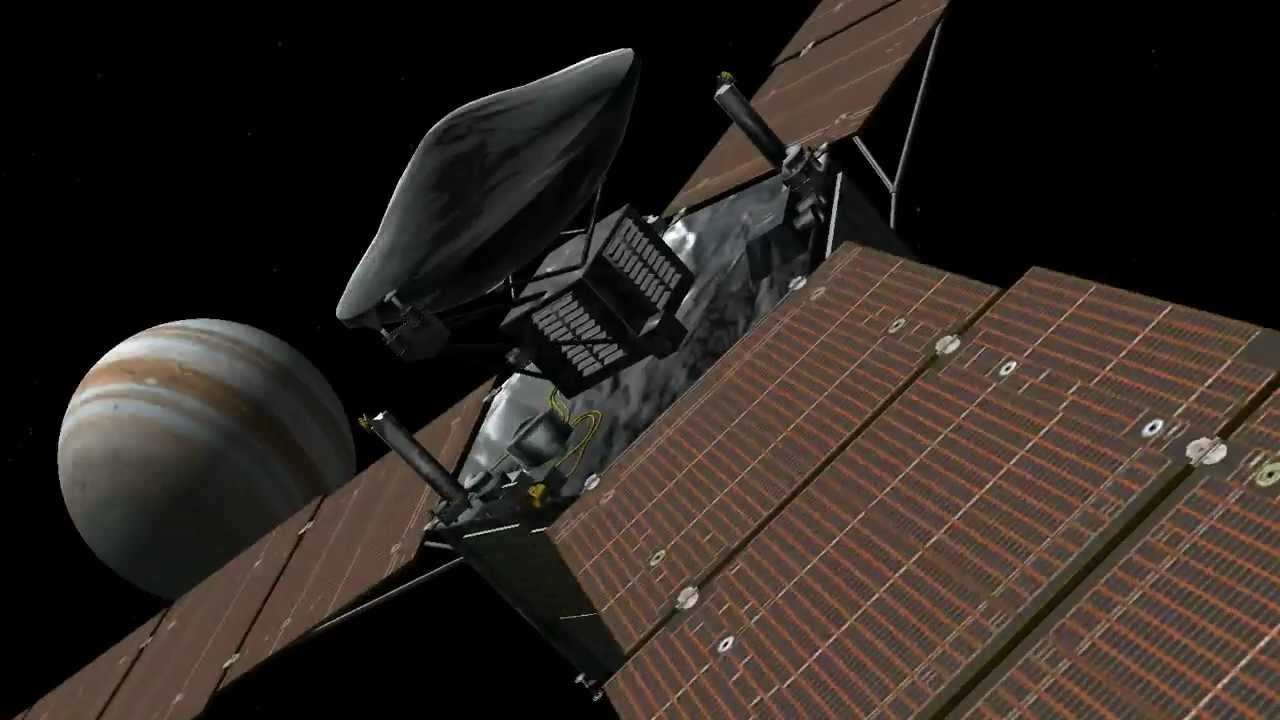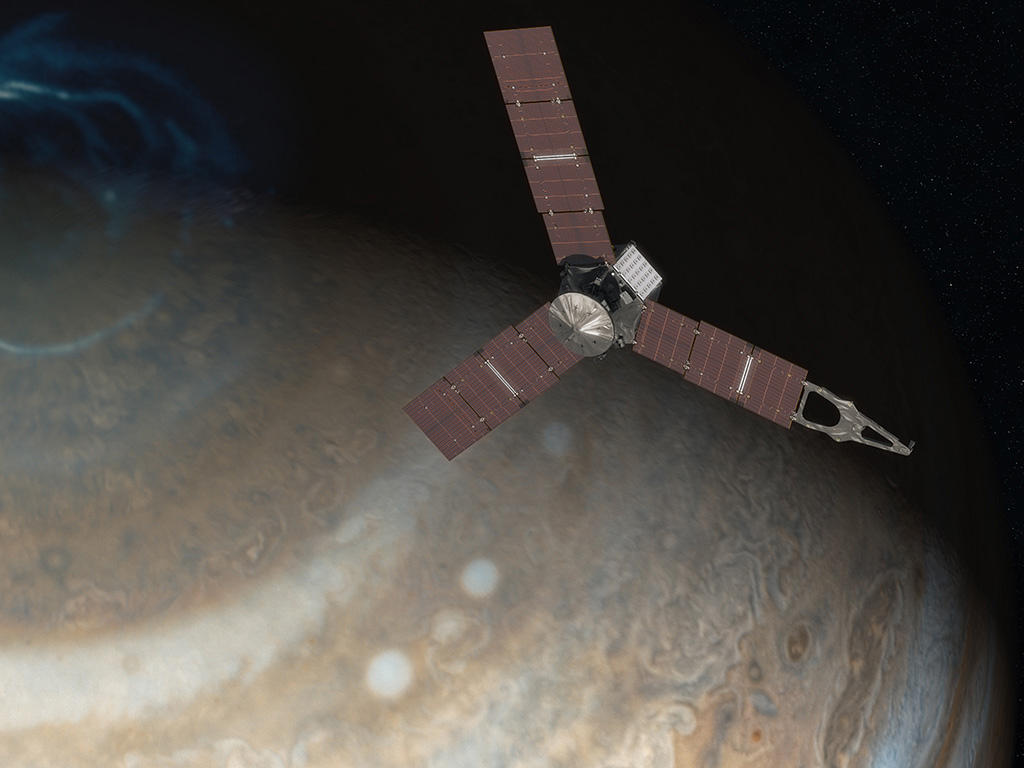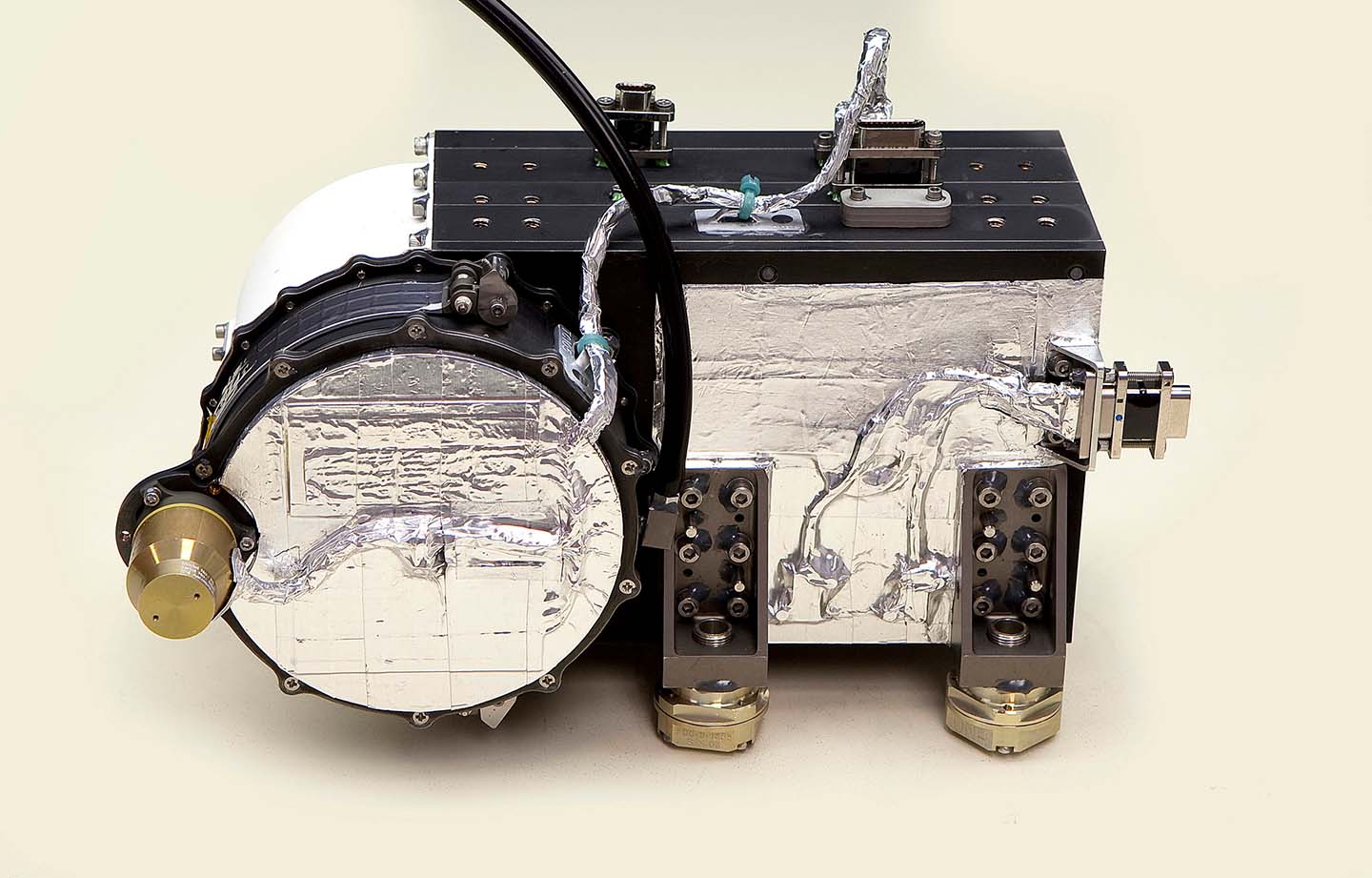Press Release
NASA’s Juno and JEDI: Ready to Unlock Mysteries of Jupiter
On board NASA’s Juno spacecraft — set to enter Jupiter orbit on July 4 — are instruments that will help scientists answer fundamental questions not just about the solar system’s largest planet but also about Earth and the universe.
“I view Jupiter as a missing link,” said Barry Mauk of the Johns Hopkins University Applied Physics Laboratory (APL) in Laurel, Maryland. Mauk leads the investigation team for the Jupiter Energetic Particle Detector Instrument (JEDI), which was built by APL. “Jupiter is the link between the nearby space environments we study at planets like Earth, and distant astrophysical systems where magnetic fields hold sway, such as early-stage star forming regions, and hyper-energetic radiation regions like the Crab Nebula. Juno is not only going to help us better understand Jupiter, it’s going to help us better understand the universe around us and our place in it.”
JEDI consists of three shoebox-sized detectors, each of which views a three-dimensional, 120 degree by 12 degree “slice” of the sky; the units are positioned to provide a continuous 360-degree sampling view of the space around Juno. These detectors will provide data on particles with energies in the 30 to roughly 1,000 kiloelectron volt (keV) range that surround the planet and help create the enormous and powerful auroras surrounding Jupiter’s polar regions. JEDI detects electrons and ions such as protons, helium, oxygen and sulfur that interact with Jupiter’s atmosphere in creating the aurora; it also measures energetic neutral atoms emanating from Jupiter’s auroral atmosphere.
“A unique aspect of JEDI is its ability to simultaneously measure incoming particles from many directions, allowing JEDI to obtain nearly instantaneous snapshots of the complete particle distributions,” said Dennis Haggerty, APL’s instrument scientist for the JEDI investigation. “This capability is crucial for revealing the fundamental physics of Jupiter’s aurora because of the extremely rapid speed of the Juno spacecraft as it passes over Jupiter’s poles. Juno will be moving at more than 30 miles a second (50 km/s) across auroral structures known to be as narrow as 50 miles (80 km) wide.”


